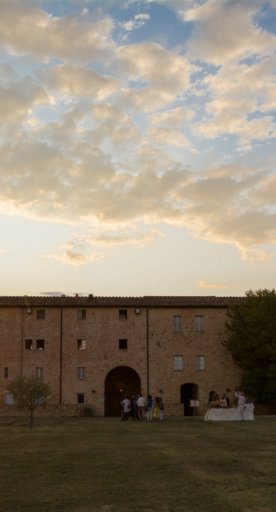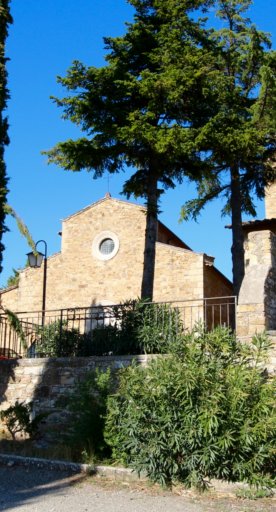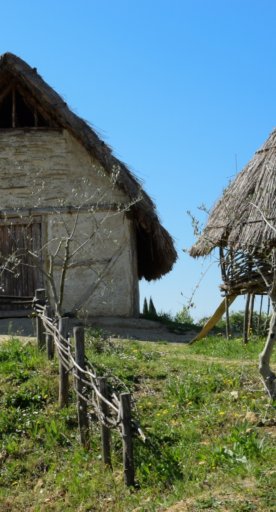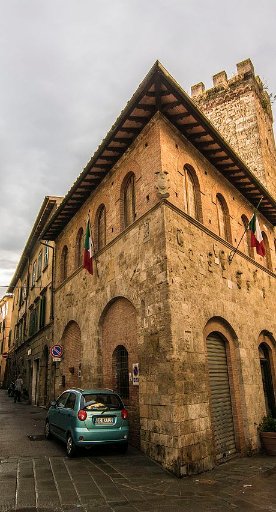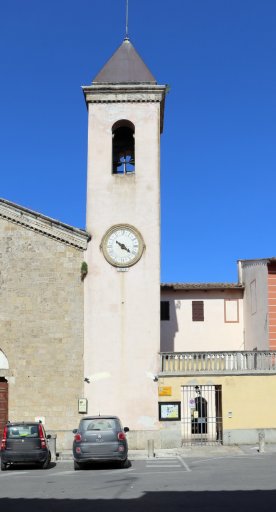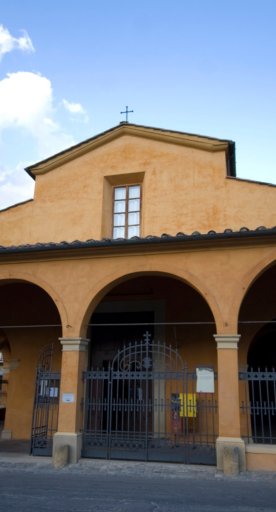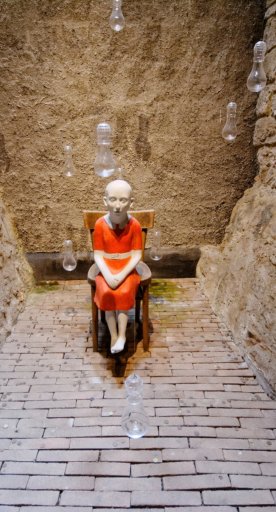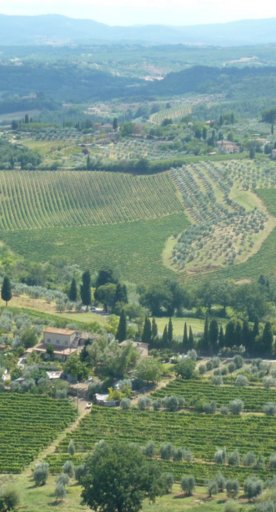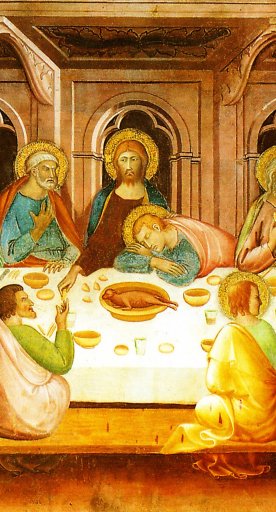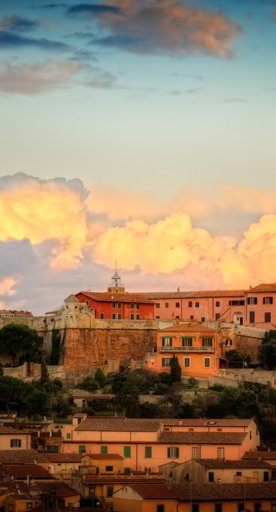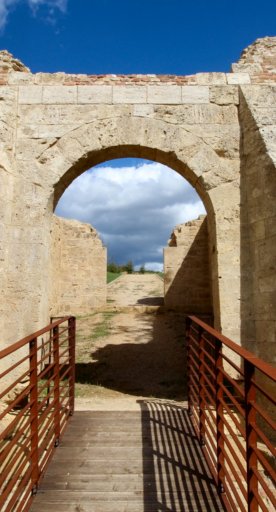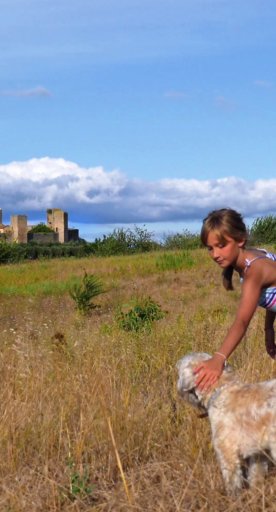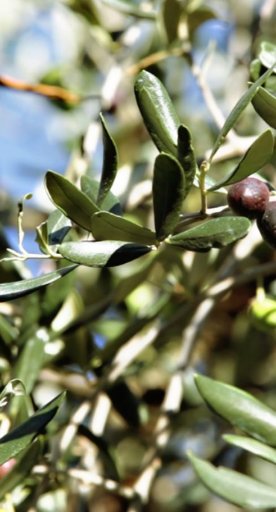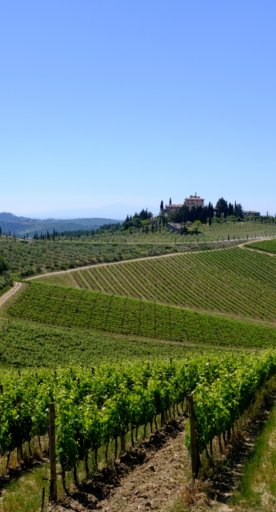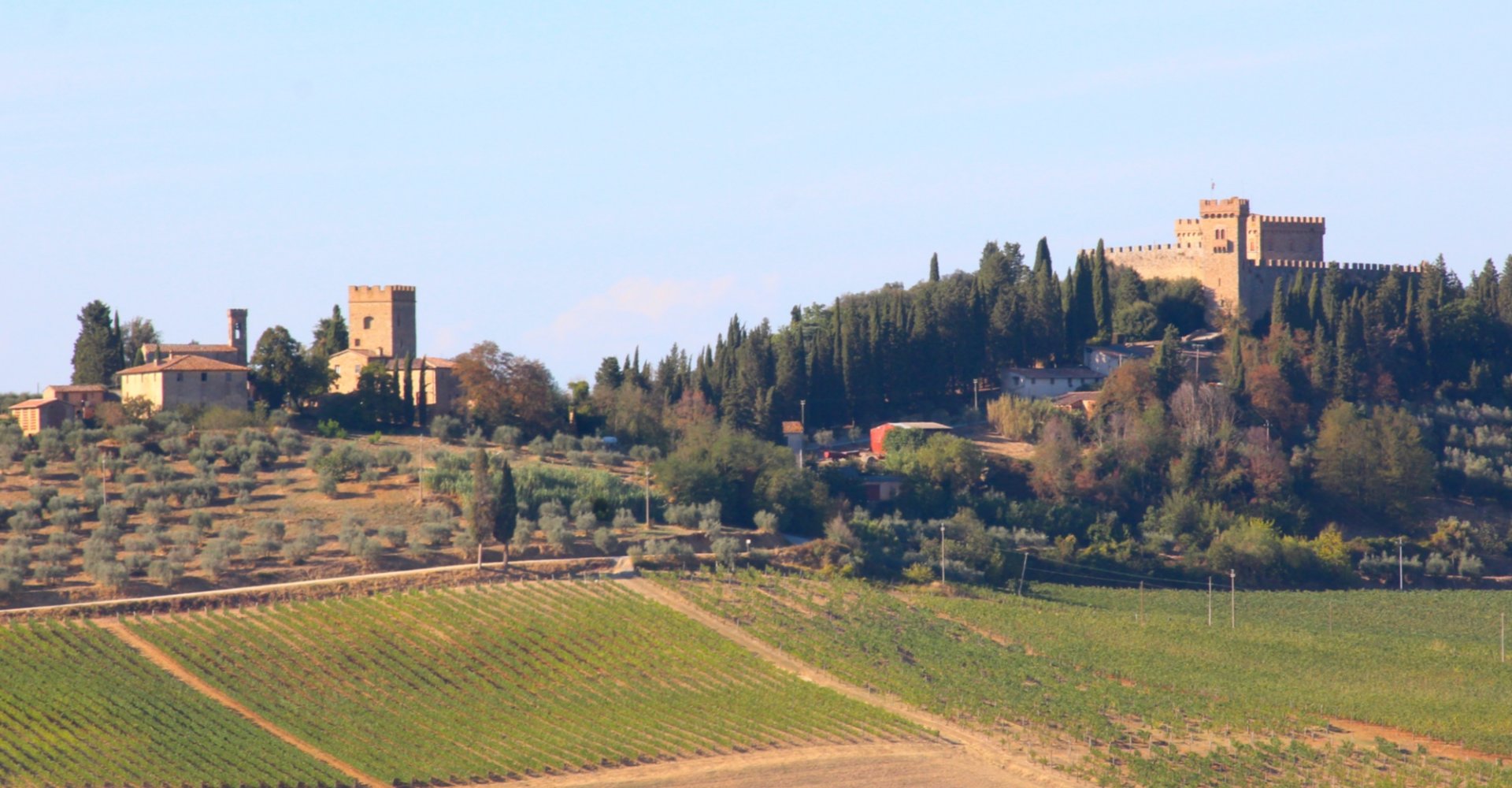
Poggibonsi
A land of fortresses and castles in the Tuscan Valdelsa
Poggibonsi, the Valdelsa, has ancient origins, and it doesn’t take long to see this when you get to town. The area is abundant in traces of history, parish churches, imposing castles and fortresses, all just a short walk from the modern atmosphere of a city.
Along the motorway that leads from Florence to Siena, upon reaching Poggibonsi, you can see the imposing crown of walls that forms the outer perimeter of the Medici Fortress built in the early sixteenth century at the behest of Lorenzo the Magnificent. The project was not fully completed and the urban centre planned inside was not built. In its place, the Cassero was built with a pentagonal plan, which today dominates the surrounding hills. However, it's the entire summit of the Poggio Imperiale hill that overlooks the town of Poggibonsi which represents an extraordinary example of the process of settlement formation in central Tuscany.
What to see in Poggibonsi
The aforementioned fortress of Poggio Imperiale is part of the Archaeological and Technological Park, created to detail the story of the hill's past through the different phases of human settlement, starting with the villages made up of early medieval huts. The route includes a walkway along the walls from which you can admire a unique landscape that includes the towers of San Gimignano, while the Cassero houses the Documentation Centre that reconstructs the history of the site with explanatory panels, finds and reproductions of objects and clothes of the era. If you suddenly find yourself in front of knights who are training to strike swords or if in the distance you see smoke rising from some hut, it's a sign that you have entered the area of the park called the Archeodromo, consisting of a faithfully reproduced 10th century village brought to life by blacksmiths, cooks, farmers and spinners.
On the same theme, there's the Museum of Paleontology, set up inside the medieval Palazzo Pretorio and divided into three sections: Paleontology, Evolution of Humankind, Archaeology and Natural History (with the ruins of a Neolithic age Cucule tomb).
Among the buildings of the city, don't miss the Sanctuary of Romituzzo, a historic place of worship dating back to the 14th century, in which anatomical ex votos and painted tablets are preserved, and the Collegiate Church of Santa Maria Assunta which is the largest of the area.
Finally, there's no lack of contemporary art, with the cast iron statues that Anthony Gormley made from casts of Poggibonsesi citizens located in various areas of the city, as well as the sculptures of crocodiles and sleeping men by Mimmo Paladino, placed at the bottom of the beautiful medieval springs.
The aforementioned fortress of Poggio Imperiale is part of the Archaeological and Technological Park, created to detail the story of the hill's past through the different phases of human settlement, starting with the villages made up of early medieval huts. The route includes a walkway along the walls from which you can admire a unique landscape that includes the towers of San Gimignano, while the Cassero houses the Documentation Centre that reconstructs the history of the site with explanatory panels, finds and reproductions of objects and clothes of the era. If you suddenly find yourself in front of knights who are training to strike swords or if in the distance you see smoke rising from some hut, it's a sign that you have entered the area of the park called the Archeodromo, consisting of a faithfully reproduced 10th century village brought to life by blacksmiths, cooks, farmers and spinners.
On the same theme, there's the Museum of Paleontology, set up inside the medieval Palazzo Pretorio and divided into three sections: Paleontology, Evolution of Humankind, Archaeology and Natural History (with the ruins of a Neolithic age Cucule tomb).
Among the buildings of the city, don't miss the Sanctuary of Romituzzo, a historic place of worship dating back to the 14th century, in which anatomical ex votos and painted tablets are preserved, and the Collegiate Church of Santa Maria Assunta which is the largest of the area.
Finally, there's no lack of contemporary art, with the cast iron statues that Anthony Gormley made from casts of Poggibonsesi citizens located in various areas of the city, as well as the sculptures of crocodiles and sleeping men by Mimmo Paladino, placed at the bottom of the beautiful medieval springs.
Nearby
About 10 kilometers from Poggibonsi is the village of Staggia Senese, home to a Romanesque church of Santa Maria Assunta that featues a series of sacred artworks.
In Luco, the castle of Strozzavolpe takes us into a world of dark legends with its curious name. It's said that the marquis who had the manor built dared to make a small fox that rambled around these lands disappear and who was, in some way, its guardian, with his restless ghost wandering on full moon nights.
Halfway between Poggibonsi and Castellina in Chianti is one of the landscape features of the Val d’Elsa and Val di Cecina area: the Sienese Sant’Agnese Forest Nature Reserve. Cypresses, which were mported into Tuscany in ancient times most likely by Etruscans, make up a forest in the reserve, creating a unique and historically valuable area.
About 10 kilometers from Poggibonsi is the village of Staggia Senese, home to a Romanesque church of Santa Maria Assunta that featues a series of sacred artworks.
In Luco, the castle of Strozzavolpe takes us into a world of dark legends with its curious name. It's said that the marquis who had the manor built dared to make a small fox that rambled around these lands disappear and who was, in some way, its guardian, with his restless ghost wandering on full moon nights.
Halfway between Poggibonsi and Castellina in Chianti is one of the landscape features of the Val d’Elsa and Val di Cecina area: the Sienese Sant’Agnese Forest Nature Reserve. Cypresses, which were mported into Tuscany in ancient times most likely by Etruscans, make up a forest in the reserve, creating a unique and historically valuable area.
Typical Products
We are in the production area of Chianti Classico DOCG, the oldest within the largest Chianti wine production area, and in that of the Chianti Classico DOP extra virgin olive oil, whose expanse corresponds to that defined for the territory of Chianti Classico itself. The production of this olive oil has a centuries-old tradition, handed down from generation to generation; its main characteristics are its colour, which varies from intense green to a green with golden hues, a fruity scent and a decidedly spicy and slightly bitter taste.
We are in the production area of Chianti Classico DOCG, the oldest within the largest Chianti wine production area, and in that of the Chianti Classico DOP extra virgin olive oil, whose expanse corresponds to that defined for the territory of Chianti Classico itself. The production of this olive oil has a centuries-old tradition, handed down from generation to generation; its main characteristics are its colour, which varies from intense green to a green with golden hues, a fruity scent and a decidedly spicy and slightly bitter taste.
